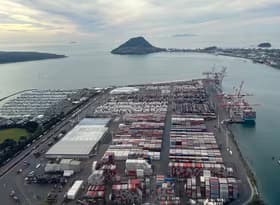Costs from grocery suppliers to supermarkets increase 2.1%pa in June

The pace of supplier cost increases to Foodstuffs supermarkets increased slightly last month, with the Infometrics-Foodstuffs New Zealand Grocery Supplier Cost Index (GSCI) showing an average 2.1% increase in what suppliers charged in June 2025, compared to a year earlier.
“The slightly faster pace of supplier cost increases reflects underlying increases to a number of key items,” said Infometrics Chief Executive and Principal Economist Brad Olsen. “Higher international food and export prices for items like dairy products are contributing to domestic costs increase too.”
The Infometrics-Foodstuffs New Zealand Grocery Supplier Cost Index (GSCI), commissioned by Foodstuffs New Zealand, measures the change in the list cost of grocery goods charged by suppliers to the Foodstuffs North Island and Foodstuffs South Island co-operatives. The Index utilises detailed Foodstuffs NZ data across over 60,000 products the Foodstuffs co-ops buy to stock in their 500+ stores, making it the largest dataset of its type in New Zealand, to give a real-time view on supplier cost changes.
Every month, the Index tracks what it costs supermarkets to buy the goods to put on the shelf. Previous analysis shows that supplier costs are the major component of supermarket prices, representing two-thirds of the on-shelf price.
Supplier costs rose across all departments in June, year on year. “Frozen costs rose 2.0%pa on average, up from just 0.6%pa in May, driven by higher pastry and dessert costs – related to higher dairy costs,” said Mr Olsen. “Higher dairy costs continue to push up average chilled foods costs too, with a 4.3%pa average annual increase, which is the highest rate since mid-2023. A number of produce costs, including for cabbage, mandarins, and grapes, were higher in June. Chocolate items and noodle costs were higher in June too, contributing to the average increase in grocery foods.”
Month on month, nearly 4,600 products increased in cost from May to June 2025. “That’s the highest monthly tally since mid-2023, although it is partially due to June having more Mondays, when cost changes generally come into effect. July cost changes are likely to be slightly lower than usual because of this timing issue.”
“Cost trends continue to be driven by a number of international factors, with higher commodity prices raising global food prices across dairy, meat, and other grocery foods like chocolate, coffee, and cooking oils,” said Mr Olsen. “Some operating costs for food producers and manufacturers are still increasing a faster pace, with a notable increase in energy price inflation. Although underlying cost increases appear more contained to specific items, rather than generalised cost pressures, any broadening out of cost pressures would be worrying.”
ENDS
Note:
The Infometrics-Foodstuffs New Zealand Grocery Supplier Cost Index (GSCI), commissioned by Foodstuffs New Zealand, measures the change in the list cost of grocery goods charged by suppliers to the Foodstuffs North and South Island cooperatives.
List cost refers to the cost suppliers charge retailers before trade spend is applied; trade spend being any form of discount provided by a supplier to allow their goods to be discounted.
The Index utilises detailed Foodstuffs NZ data, across over 60,000 products, analysed by independent economics consultancy Infometrics to produce the GSCI and publish it on a monthly basis. For more details see www.infometrics.co.nz/product/grocery-supplier-cost-index.
- Foodstuffs NI Distribution Centre by Foodstuffs NZ. Copyright 2021.
 Brad Olsen
Brad Olsen

